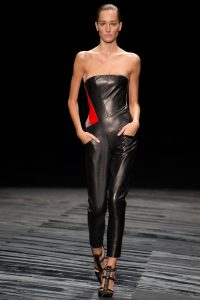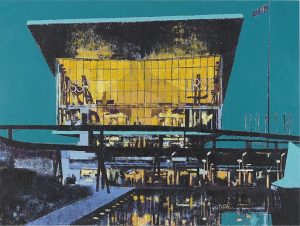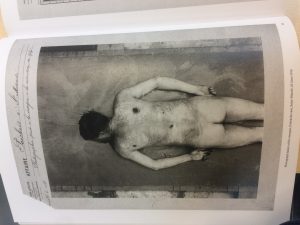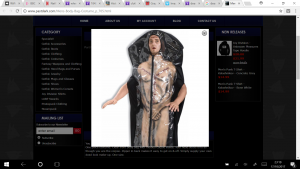J.Mendel Spring 2015 Ready-To-Wear
J.Mendel collaborated with Enoc Perez and used his work for inspiration. Through their mutual love of architecture J.Mendel created this collection.
Enoc Perez, Pavilion of the Soviet Union, Expo 67 2009
The reflection appearing in the water at the front of the painting mimics reflecting towards the historical content of the Pavilion of the Soviet Union. The bright colours can represent nostalgia as it celebrates culture and achievement. The structure is almost all painted in black. The shadows of this building can relate to the backward time-zone this image is emphasising.
The building has a relatively modern structure. The roof appears almost as a graduation cap which would be apt for this building as the chapters of history put on display have successfully completed their roles and have proved worth celebrating.
According to expo67.ncf.ca the theme of this building was chosen by the U.S.S.R to be “in the name of man, for the good of man”. I believe this theme is reflected in the colours of this painting. The saturated teal colour of the background is contrasted by the exceptional, bright yellow illuminating from the windows. This emphasises mainly the point of “for the good of man” as it breaks up the dusk-seeming background with a bold and exciting, happy colour.
The teal could also be construed as the step before night. Something that might be interpreted as the coming of an end to an era or perhaps pride. The looming background could foretell disaster and evil. Alternatively the fact that the building shines through could demonstrate human success and hope. Particularly the peace elements of the content in this building.




